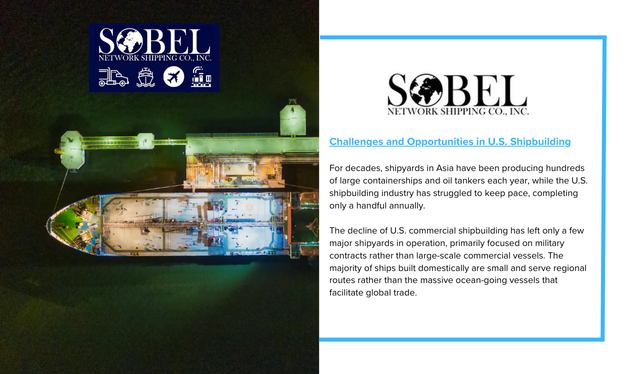For decades, shipyards in Asia have been producing hundreds of large containerships and oil tankers each year, while the U.S. shipbuilding industry has struggled to keep pace, completing only a handful annually.
The decline of U.S. commercial shipbuilding has left only a few major shipyards in operation, primarily focused on military contracts rather than large-scale commercial vessels. The majority of ships built domestically are small and serve regional routes rather than the massive ocean-going vessels that facilitate global trade.
Efforts to revitalize the industry have been proposed, including measures to impose fees on foreign-built ships entering domestic ports and requirements for a portion of exports to be transported on domestically constructed vessels. However, these initiatives face significant labor and financial challenges.
The industry once employed over a million workers during its peak in World War II. However, as global competition intensified, employment in U.S. shipyards declined, with the workforce failing to reach 200,000 since the early 1980s. Recent military contracts have provided some boost to employment figures, but the commercial sector remains largely stagnant.
In the 1970s, U.S. shipyards contributed around 5% of global ship tonnage, producing roughly two dozen ships per year. Today, that number has dwindled, with the U.S. accounting for only 0.1% of the world’s ship tonnage in 2023. The few large commercial vessels built in the U.S. come from a limited number of shipyards.
Meanwhile, global competitors continue to expand their dominance in shipbuilding. One nation alone accounted for over half of global tonnage in 2023 and secured the majority of new ship orders. The world’s leading shipping companies now rely on hundreds of vessels built abroad to transport goods, and proposed fees on these ships could reshape the economics of maritime trade.
U.S. shipyards face competitive disadvantages in cost, efficiency, and production scale. A recent comparison highlights the disparity: a U.S.-built midsized containership costs significantly more than a similar vessel constructed in Asia. Additionally, foreign shipbuilders are delivering much larger vessels at lower prices, further widening the gap in competitiveness.
The future of U.S. shipbuilding depends on addressing these challenges through policy measures, investment in domestic infrastructure, and workforce development. While efforts to boost domestic production are underway, global market dynamics and cost considerations continue to shape the industry’s trajectory.


